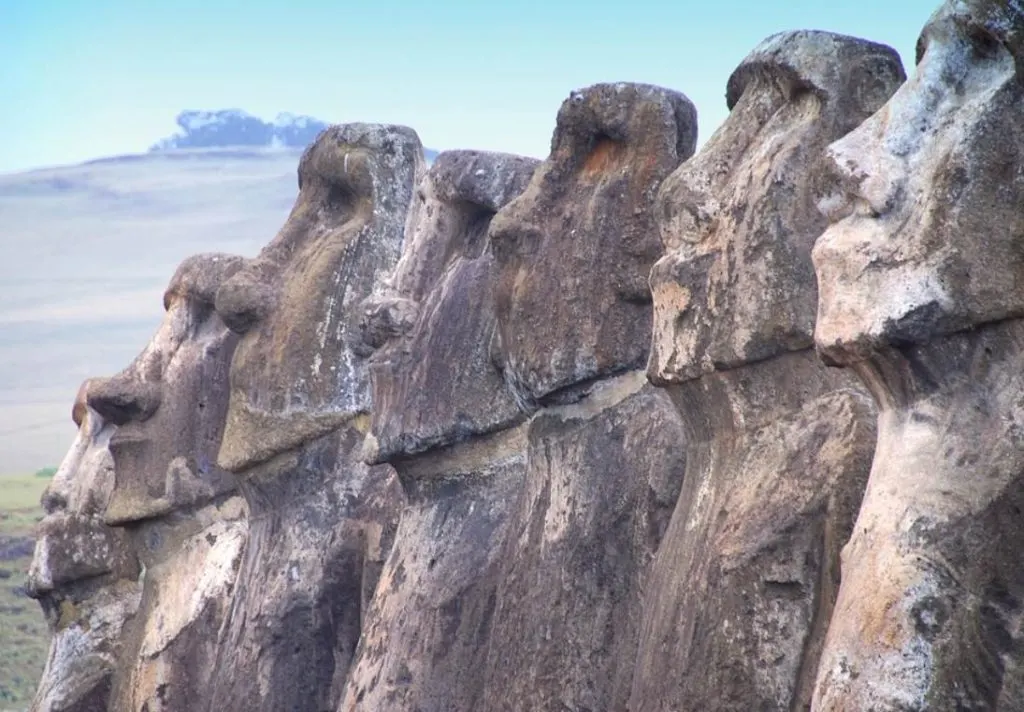Easter Island is one of the most peculiar and mysterious islands in the world. Why?
Mainly because of the existence of nearly 1,000 statues of large heads, monuments referred to by the native people of Easter Island as “Moai.”
The island is located in the southeastern Pacific Ocean, and in fact at the southeasternmost point of Polynesia.
An interesting fact about Easter Island is that it’s one of the most remote islands that is inhabited in the world. To find other inhabited islands or towns that have a population of over 500 people you need to travel at least 1289 miles (2075 kilometers).
In this article, we’ll check out some interesting facts about the history of the island and the Easter Island statues so you get the complete picture of this magical place.
1. The history of the island starts rather obscure
There isn’t any written evidence as to how the island became inhabited initially. There is a legend though which was told by Eastern Islanders to the first Europeans that discovered the island.
According to the legend, a chief named Hotu Matu’a first came to the island with his wife and family in a big canoe (or two canoes, the stories vary a bit).
He also brought his captain named Tu’u ko Iho.
They landed at Anakena beach, a beautiful white coral sand beach. From there, they spread across the island.

All scientific evidence, along with the information from the legends told by locals, assume this happened somewhere between the years 300 and 1200 AD.
Interesting fact: This is about the same time that the first settlers arrived on the islands of Hawaii.
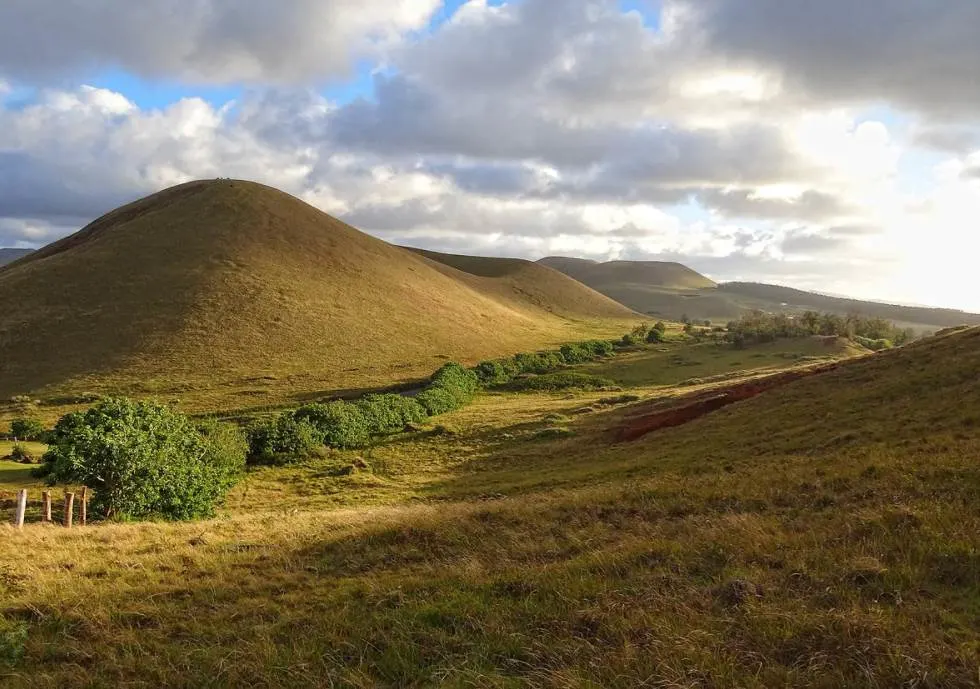
2. Which people first inhabited Easter Island?
Easter Island was inhabited as early as the year 300 AD (estimated). So who exactly was the famous chief who came to the island with his canoe?
In other words, where did the first Easter Island inhabitants come from?
It’s assumed that the first settlers were South-East Polynesians. This can be verified by the food they grew which was consistent with the food grown on other islands such as:
- Bananas
- Taro
- Sugarcane
- Paper mulberry
Another similarity is regarding the statues, as similar sacred monuments can be found on other South-East Polynesian Islands. These are called “Marae.”
Today, the native people of Easter Island are referred to as the Rapa Nui people.
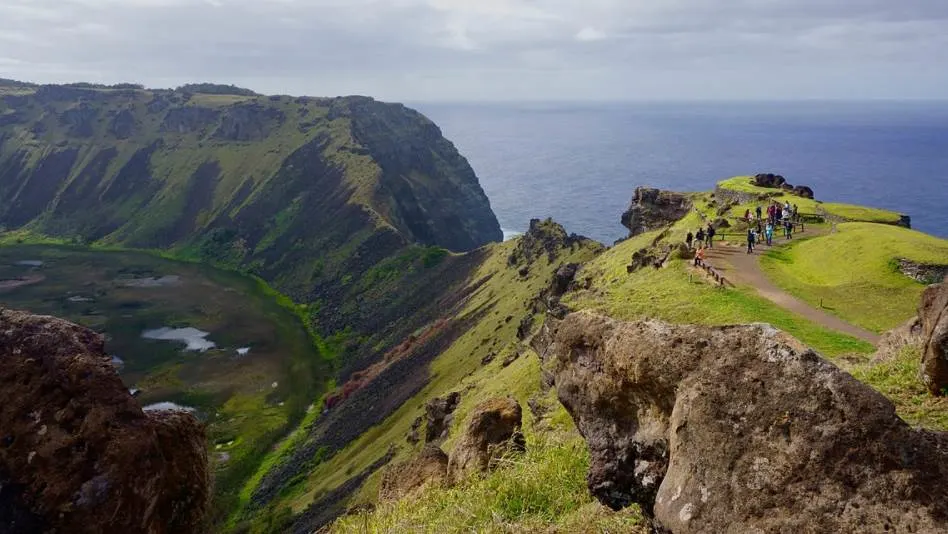
3. There might be a link to South America as well
Even though all evidence shows that the first inhabitants of Easter Islanders were South-East Polynesians, there are some possible links to South America as well.
This would prove that there was back-and-forth contact with South America before the discovery of the island by Europeans.
- A legend – Unable to be verified, but sustained through word-of-mouth is the legend of the “Hanau Epe” (translates to long-eared or fat people) and “Hanau Momoko” people (translates to short-eared or skinny people). An interpretation of the story of a war between these two groups is that migrants from South America came to the island causing conflict.
- Sweet Potato – Part of the diet of the Easter Islanders was sweet-potato. This can only be found in South America, which would prove that there has been some form of contact between the islanders and South-America.
Whether or not this happened remains unclear and open for discussion.
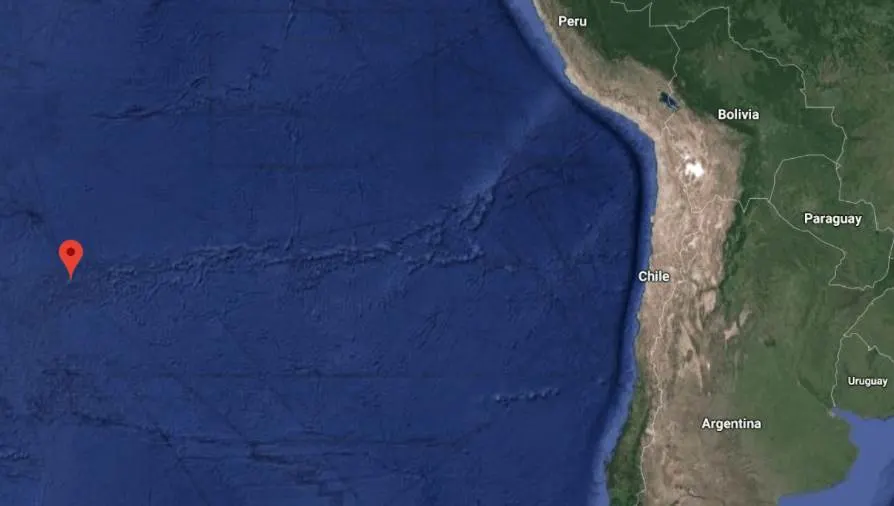
4. What language do Easter Islanders speak?
The aboriginal people living on Easter Island are referred to as “Rapa Nui.” Their language is closely related to the Mangarevan language. About 80% of the vocabulary is the same.
Interesting fact: The Mangarevan language is currently spoken by only about 600 people, most of them living in the Gambier Islands of French Polynesia.
5. How did society work on Easter Island?
To understand more about the Easter Island Statues, we need to understand how society on the island worked. Stories told to missionaries in the 1860s explain that the island had a strong class structure.
This means the Easter Islanders had:
- A king or high chief whatever the word they gave is means called “Ariki.” He was actually a descendant from the first settler Hotu Matu’a.
- A Chief for all the 9 clans that lived on the Island. The Ariki had power over all of these chiefs.
- Priests who were in power of all religious matters.
- Regular people which were either soldiers and commoners.
The most important visual legacy of the Rapa Nui people is the Moai Statues they left behind on the island.

6. Why did Easter Islanders build Moai Statues?
If you think about Easter Island, you automatically connect it with big statues of large heads in a desolate landscape. And more importantly, without actually knowing why they are there in the first place.
Little is known about the exact reason that the Easter Islanders built the famous statues and how they did it. They are generally considered to be faces of deified ancestors, most probably chiefs.
It’s also assumed that the native Easter Islanders had a strong belief that the dead were watching over the living, and the living could help the dead with offerings, of which the moai are the best example.
What is clear is that they were manufactured in a place called Rano Raraku, the main moai quarry. Half of them are still there at the moment. The others have been moved near the coastline with their backs facing the ocean.
The tallest moai erected, called Paro, was almost 10 meters (33 ft) high and weighed 82 tonnes (90.4 short tons).
How the Easter Islanders created and transported these massive statues remains a fascinating mystery.
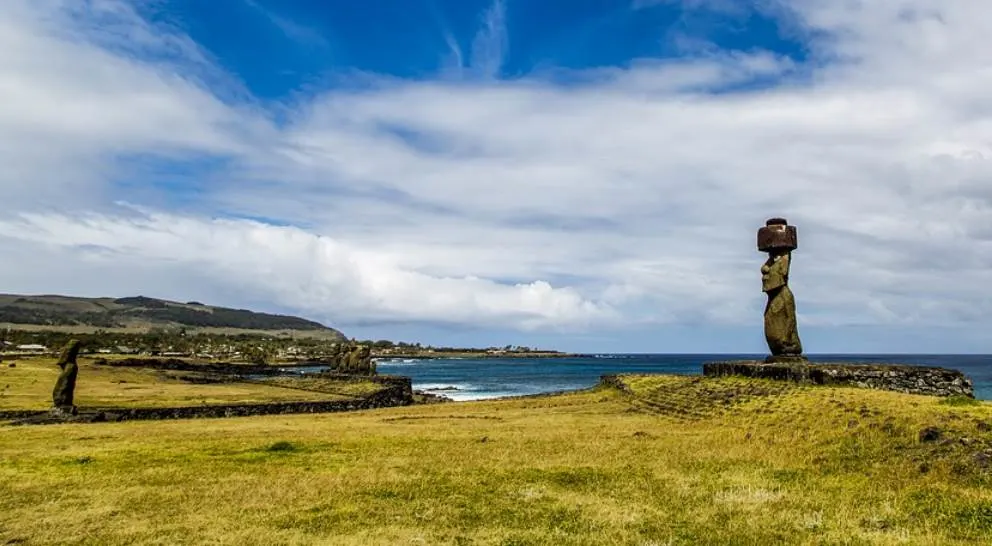
7. There was a special cult on the island
The flourishing society that built these moai statues approximately lasted from the year 1250 to 1500 AD.
The main problems the islands were facing were deforestation and overpopulation. This in combination with an already fragile ecosystem caused many problems.
The result was that warriors were able to increase their power, and instead of worshipping ancestors, war amongst the clans living on the island became the most important.
Plus, they started worshipping a new God as well, called Make-make.
The reason why exactly the warriors, referred to as the “Matatoa” is up for debate, but that the main problems the islands were facing were the cause is the most logical assumption.
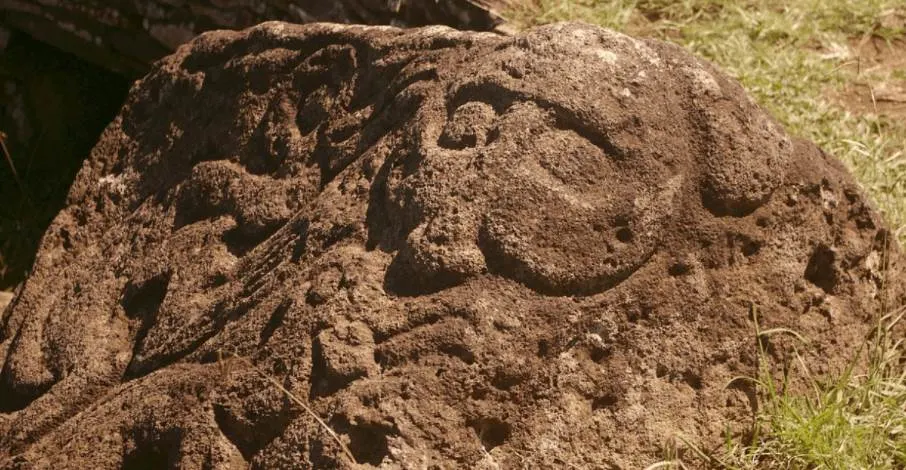
8. Who discovered Easter Island?
The first time Europeans set foot on the island was on April 5, 1722. If you ever wondered why Easter Island is called the way it is, it’s because it was discovered on Easter afternoon.
Dutch explorer Jacob Roggeveen was sent out by The Dutch West India Company to find Terra Australis.
Instead, he came across Easter Island, which he described as “an island with rich soil, a good climate and fully cultivated.”
He also made note of the tall, remarkable statues he came across and estimated the population at about 2,000-3,000 people. This was probably much higher as it was just an estimate from Jacob.
Unfortunately, a fight broke out in which they killed 12 people and wounded many others.

9. Statue-toppling occurred on Easter Island
By the time James Cook arrived n Easter Island in 1774, he reported several moai statues had been toppled.
Earlier visits from the Dutch in 1722 and the Spanish in 1770 all reported they only saw standing statues.
It appears that internal conflict was the reason the islanders deliberately toppled the ancestral monuments. This continued up until the 1830s.
By that time, there were only a few places where the statues were still standing.

10. The end of the Rapa Nui aboriginal culture
Ever since the Dutch arrived on the island in 1727, the population of Easter Island had been declining. Deforestation and overpopulation were the main causes.
While it’s estimated that about 10,000 people lived on the island the moment Jacob Roggeveen discovered it, only about 2,000 people lived there when James Cook arrived in 1774.
Ironically, the deforestation was caused by the creation of the moai as it eased construction and transportation.
The most devastating happened during the 1860s, causing the Easter Island society to be wiped away completely.
- Slave raiders from Peru “stole” about half the population in 1862.
- Only a few dozen managed to return to Easter Island in 1863.
- The people that returned brought tuberculosis, and a serious plague broke out in 1867, resulting in only 930 Rapa Nui surviving.
- One of the victims was the last remaining “Ariki,” the last royal first-born son.
- Roman Catholic missionaries converted the remaining Rapa Nui and the entire population that remained were now Catholic.
These events marked the end of the culture that created the moai statues and the birdman cult that followed it.
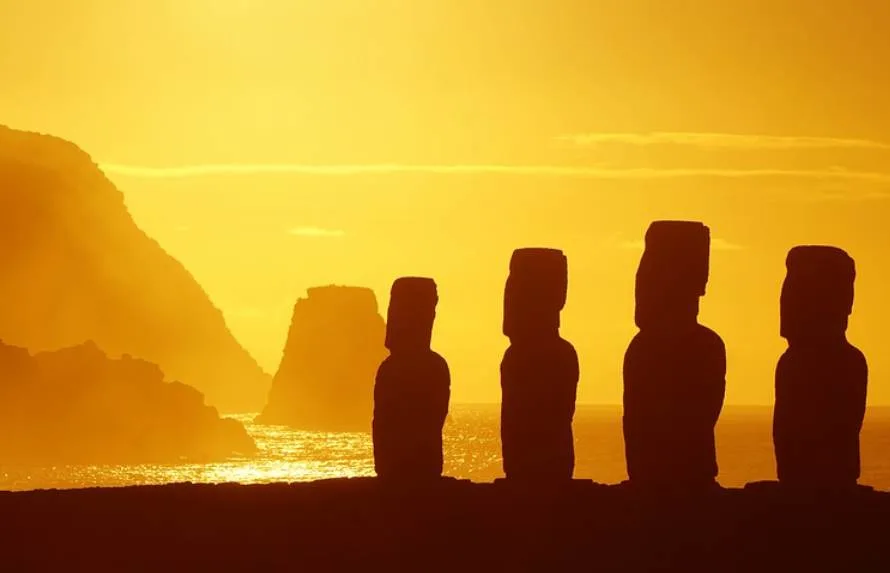
11. Easter Island is part of a South American country today
The first time Chile has visited Easter Island was on 8 March 1837 by the famous ship the “Colo Colo.”
It wasn’t until 9 September 1888 that Chile reached an agreement with the Rapa Nui people. Easter Island was annexed by Chile through the “Treaty of Annexation of the Island.”
An interesting fact about this: The validity of this treaty is still contested by some Rapa Nui up until today. In 2015, a non-violent revolution was started by the local minority group Rapa Nui Parliament. Their goal is to gain independence from Chile.
12. The Easter Island statues are popular tourist attractions
Easter Island has become a popular tourist destination. Despite its isolated location, the moai and desolate landscape still encourage people to visit this mysterious land.
Less than 8,000 people live on the island today, nearly half of them in the main town Hanga Roa.
Because of the huge influx of tourists, and in a bid to preserve its historical importance, the government of Easter Island has limited the period that tourists can stay on the island to just 30 days.
Want to visit Easter Island? Make sure to respect the ancient culture.
